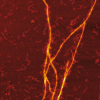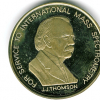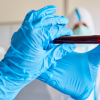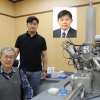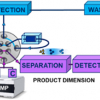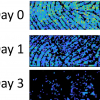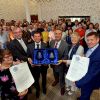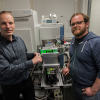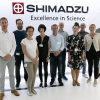Mass Spectrometry News
The templating mechanism of S100A9 amyloids on Aβ fibrillar surfaces during co-aggregation process was revealed by synergy of biophysical methods including charge detection mass spectrometry, microscopy, kinetic and microfluidic analyses.
Alison Ashcroft and Ron Heeren have been awarded 2020 Thomson Medals.
Bruker is partnering with the Australian National Phenome Centre which has launched a major research and diagnostics project to better understand COVID-19.
The COVID-19 MS Coalition of more than 500 scientists from around the world has been created to share data on COVID-19 gleaned from the use of mass spectrometry techniques to examine people’s blood and other biomarkers.
Researchers from Daegu Gyeongbuk Institute of Science and Technology have used SIMS to visualise up to tens of different proteins simultaneously in the same cell.
The multiplexed enhanced protein dynamics (mePROD) mass spectrometry method helps show how a SARS-CoV-2 infection changes the human host cells.
SCIEX and Intabio are working to couple the Blaze imaged capillary isoelectric focusing with mass spectrometry system with SCIEX high-resolution accurate mass spectrometers.
Applications are invited for these prestigious awards administered by the Association of British Spectroscopists (ABS) Trust.
Individual ion mass spectrometry (I2MS) can determine the exact mass of a huge range of intact proteins. It analyses the mass of each and every molecule on an individual basis.
A number of awards are presented at each annual Pittsburgh Conference honouring scientists who have made outstanding contributions to analytical chemistry and applied spectroscopy. We report here those directly involved in spectroscopy.
LC-MS/MS enables analysis of a wider range of hormones from whales and a more reliable pregnancy test.
A new research project in partnership between academia, companies and the Netherlands Forensic Institute to develop ways to chain analytical techniques together to gain complementary information.
An experimental fingerprint detection approach can tell whether an individual has actually consumed cocaine or simply handled it based on the presence of a metabolite.
Mass spectrometry imaging is offering a first step in determining the age of fingerprints from the degradation of triacylglycerols.
A state-of-the-art fingerprint detection technology can identify traces of heroin on human skin, even after someone has washed their hands, and can discriminate between an individual who has used the drug or shaken hands with someone who has handled it.
Using mass spectrometry, scientists at the University of Southampton have shown how a specific type of symbiotic algae, which lives in coral tissue, is able to adapt and survive the hotter seawater temperatures caused by global warming.
Markes International has received two Queen’s Awards for Enterprise in the “Innovation” and “International Trade” categories.
MOBILion’s ion mobility separations technology—Structures for Lossless Ion Manipulation (SLIM)—is to be integrated with Agilent’s Q-TOF mass spectrometry platform.
Scientists at Münster University use dual-beam lasers to increase the resolution of MALDI MS imaging.
Shimadzu has opened a branch office in Sweden, which will market Shimadzu’s full range of analytical instrumentation solutions.

